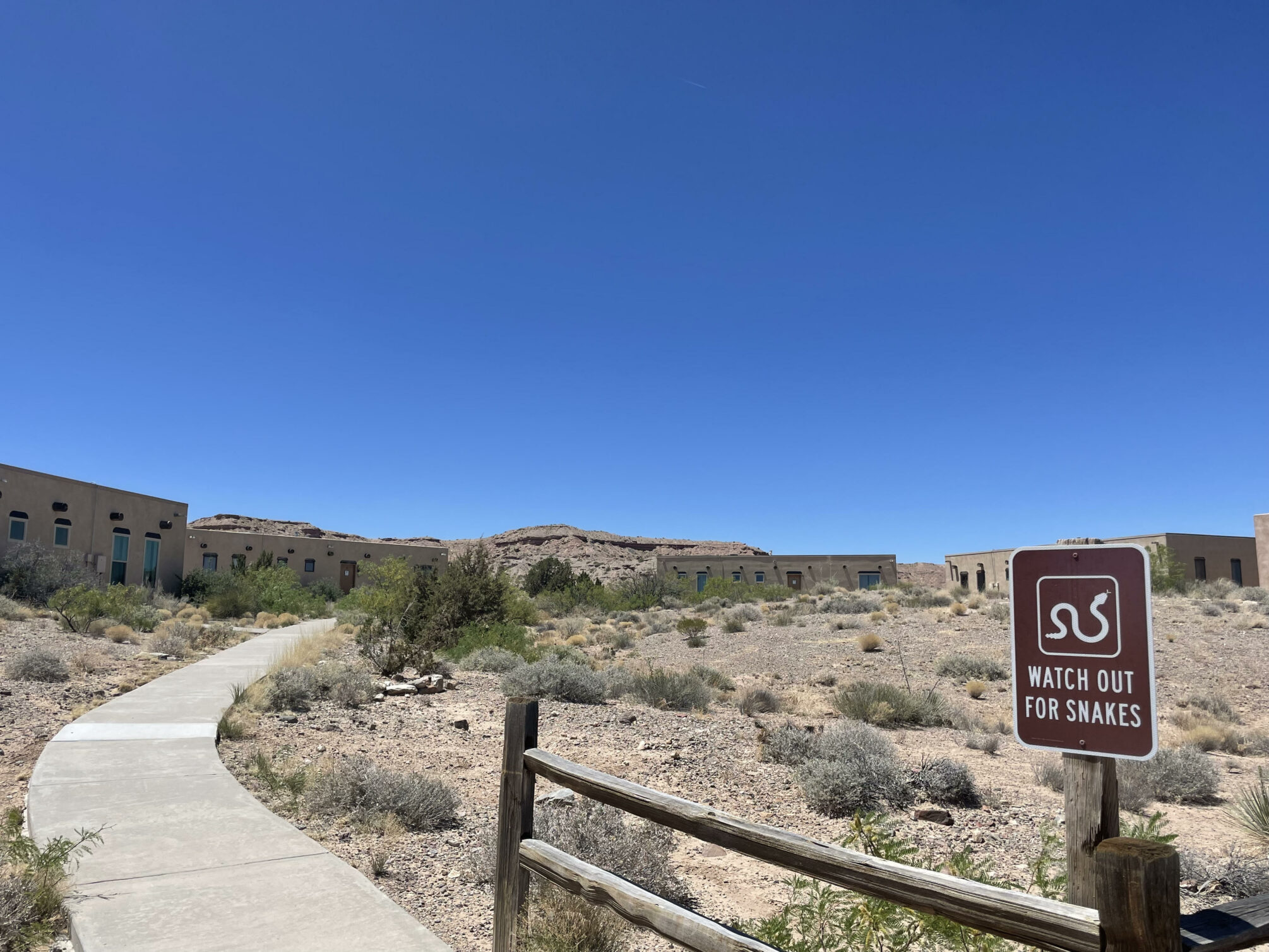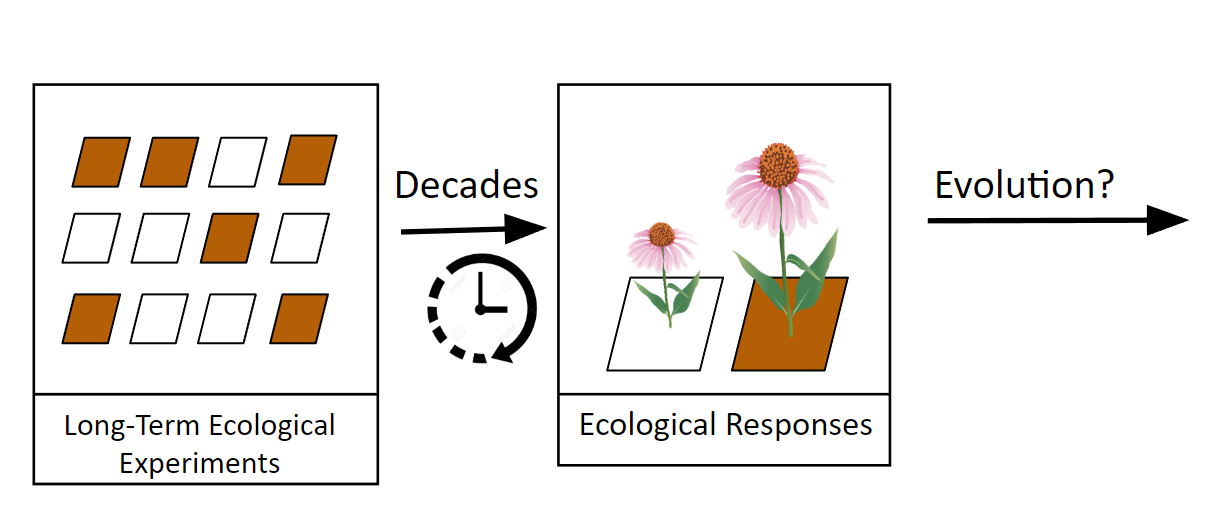New cross-site working group explores untapped evolutionary research potential at LTER sites
By Dr. Ezra Kottler, postdoctoral researcher at the University of Colorado, Boulder
On a bright and windy May afternoon in Albuquerque, NM, a group of travel-worn but enthusiastic scientists piled into several rental SUVs and drove an hour down to the Sevilleta National Wildlife Refuge, site of the Sevilleta LTER. Some were LTER veterans who regularly work at sites across the country. Others were evolutionary researchers who would be visiting an LTER site for the first time.
The attendees congregated in an NSF-funded working group led by Drs. Meghan Avolio, Jennifer Cocciardi and Ava Hoffman with the aim of discussing evolutionary research on climate change, and how to best conduct it at LTER sites. The group consisted of 26 in-person attendees plus 10 remote participants. Participants represented a wide swath of career stages, and included LTER site leaders and PIs from five LTER sites, as well as evolutionary biologists curious about starting new collaborations with LTER scientists.

Credit: Haley Branch, CC BY-SA 4.0.
For many in-person attendees, this was the first working group they had traveled to since the start of the COVID-19 pandemic. But after shaking off some initial social awkwardness and sharing pictures of numerous “pandemic puppies”, the group focused in on the key goal of the working group: building a framework for long-term evolutionary research at LTERs.
Because LTERs collect both long-term observational and experimental data over decadal timescales, LTER sites have incredible potential for studying the feedbacks between ecological and evolutionary processes across the timescales at which these feedbacks interact.
Yet only a few sites have incorporated evolutionary questions into their research programs. For example, over more than 20 years at Nutrient Network (NutNet) plots at the Sevilleta LTER site, researchers have measured the impact of nutrient addition on ecological processes. This length of time is more than sufficient to also measure changes in the evolutionary trajectory of species under different nutrient regimes (Figure 1). But, like many other long-term ecological experiments, this project lacks crucial elements that would allow researchers to detect evolutionary changes. In particular, few incorporate the collection of voucher specimens,or reference specimens preserved for future study, at regular time intervals. Collecting voucher specimens from habitats that have experienced natural or experimental change would be a relatively easy addition to ongoing data collection protocols and would allow researchers to probe evolutionary questions. Researchers could sequence voucher specimen DNA and look at sequence shifts over time in neutral or potentially adaptive genomic regions.

Credit: Credit: Ezra Kottler
Through five days of discussions and brainstorming sessions, the team of ecologists and evolutionary biologists came up with ideas to integrate evolutionary research into existing LTER work. For example, many LTERs have annual data on which plant species are present in long-term plots. Researchers could use this data to explore changes in phylogenetic diversity, a measurement of biodiversity based on how closely species are related to one another on the tree of life. Another method that could capitalize on existing LTER research is the use of common garden and/or reciprocal transplant experiments with plants that have acclimated (and potentially evolved) to the conditions present in long-term experiments at LTER sites. These experiments could let researchers determine if plants have adapted to certain environmental conditions, and if they have, which traits are the targets of selection.
Alongside furthering our understanding of evolution, eco-evolutionary research supports LTER goals of understanding the impacts of environmental drivers on processes such as population dynamics and nutrient cycling. This is because the outcomes of evolutionary processes (i.e. phenotypic changes) can then feed back into ecological interactions, ultimately driving important aspects of ecosystem function.
The researchers involved plan to further the goals of this initial working group by a) publishing a manuscript that expounds our developed framework, b) applying for additional funding to support LTER cross-site evolutionary research, c) further discussing the integration of evolutionary questions into the LTER research framework with site leaders in a workshop at the LTER ASM 2022 hosted by Dr. Meghan Avolio, Dr. Thomas Mozder, and Dr. Jenny Cocciardi and d) increasing awareness and accessibility of LTER data and research to the evolutionary biology community through an event at Evolution 2023.
If you are interested in learning more about the LTER-Evo Project and potentially getting involved, please email Dr. Jenny Cocciardi at jenny.cocciardi@jhu.edu or Dr. Meghan Avolio at meghan.avolio@jhu.edu

Credit: Haley Branch, CC BY-SA 4.0.










